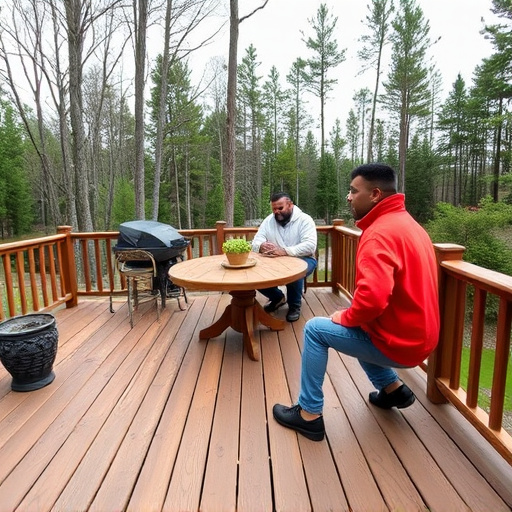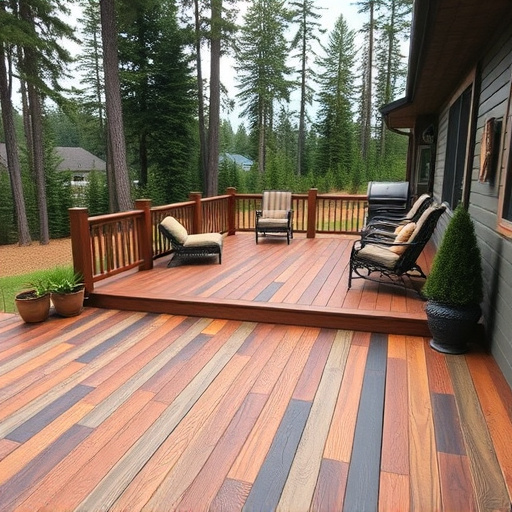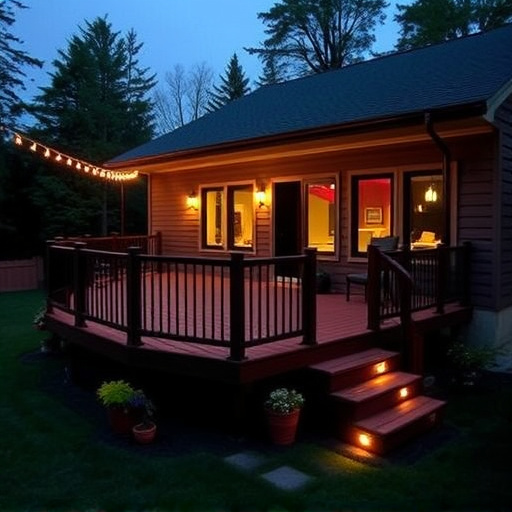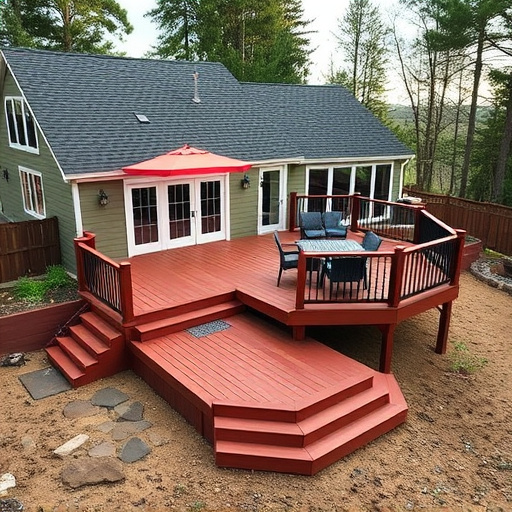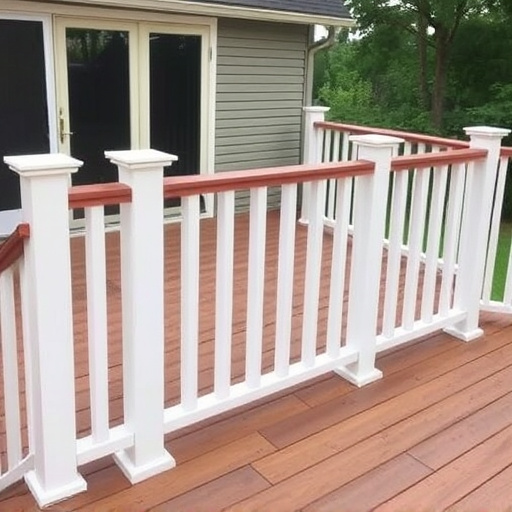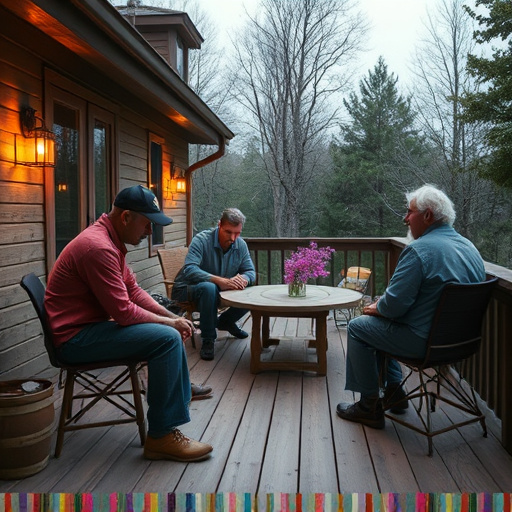For a successful slip-resistant decking project, start by clearly defining your vision—blending aesthetics and functionality with your home's architecture—and communicate this effectively to builders. Research trends, materials, and safety standards, considering composite decking and advanced technologies for durability. Outline specific goals, material preferences, color schemes, features like railings or lighting, and structural requirements to ensure your builder understands and delivers a deck that meets both your style and safety needs.
Communicate your vision for a slip-resistant deck clearly and effectively with these expert strategies. Understanding your goal—a safe, stylish space—is key. Research current trends and safety standards in slip-resistant decking, defining your expectations. Choose a builder skilled in this technology, armed with detailed visual plans and precise language. Discuss material testing, unique textures, and compliance with building codes. Regular check-ins ensure your vision becomes a reality, transforming your outdoor space into a safe haven.
- Understanding Your Vision for Slip-Resistant Decking
- – Define your goals and expectations for the deck
- – Research current trends and safety standards in slip-resistant decking
Understanding Your Vision for Slip-Resistant Decking
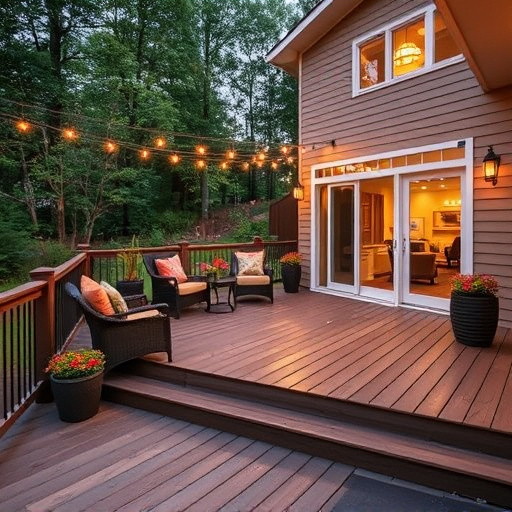
Having a clear vision for your decking project is essential when communicating with deck builders. When it comes to slip-resistant decking, understanding your desired outcome is key. This involves considering not just the aesthetics but also the functional aspects of the space. You might envision a deck that seamlessly blends with your home’s architecture, offering a stylish and safe exterior living area. A slip-resistant surface is crucial for preventing accidents, especially in high-traffic areas or where children play.
Defining your vision includes deciding on specific features like the type of material (wood, composite, or vinyl), color schemes, and additional elements such as railings, benches, or lighting. Remember, a successful communication with deck builders starts with a detailed brief that includes your preferences for slip-resistant decking solutions, ensuring the final product aligns perfectly with your expectations.
– Define your goals and expectations for the deck
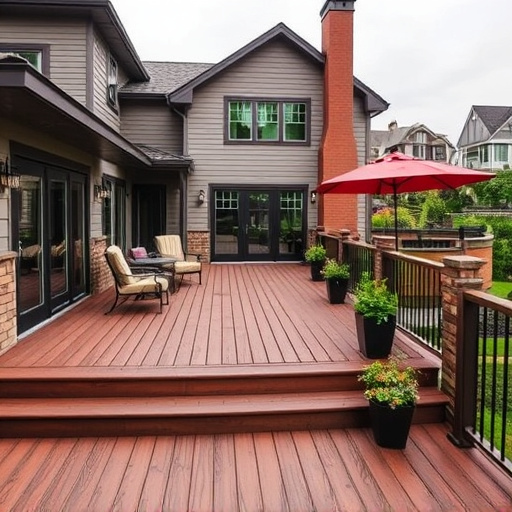
Before engaging deck builders, it’s crucial to define your vision and set clear goals for your new deck. Start by envisioning how you want to utilise the space – is it primarily for relaxation, entertainment, or both? Consider the overall style that complements your home’s architecture and your personal aesthetic preferences. Think about the essential features you desire, such as slip-resistant decking for safety, comfortable seating areas, or perhaps built-in lighting for evening gatherings.
Additionally, outline practical considerations like dimensions, materials (wood, composite, or other), and any specific design elements you have in mind. Keep in mind that your deck builder will translate this vision into reality, so clear communication is key. Mentioning details like the need for a robust structure, especially if you plan to add weighty fixtures like a hot tub (which could require reinforced decking), or exploring options for seamless integration with existing siding installation and roofing solutions, will help ensure your dream deck becomes a reality.
– Research current trends and safety standards in slip-resistant decking
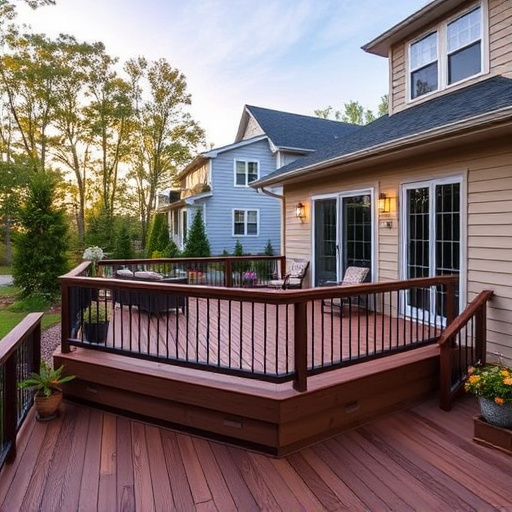
Before communicating your vision for slip-resistant decking to deck builders, conduct thorough research on current trends and safety standards in this field. Stay updated with the latest innovations in non-slip surfacing materials and designs that enhance traction while maintaining aesthetics. Familiarize yourself with industry regulations and guidelines to ensure compliance, particularly focusing on local building codes and health and safety protocols. This knowledge will empower you to make informed decisions when selecting a deck builder who aligns with your vision for both functional and safe slip-resistant decking solutions.
Additionally, understanding the interconnection between roofing and siding in conjunction with deck construction is beneficial. As professionals in the industry, builders should be well-versed in integrating these elements seamlessly, especially when incorporating slip-resistant features. Consider discussing the potential for enhancing overall exterior aesthetics and durability by combining high-quality materials and advanced technologies in both roofing and siding, ensuring a harmonious design that complements your vision for the deck.
When communicating your vision for a slip-resistant deck to builders, start by clearly articulating your goals and expectations. Have a thorough understanding of industry trends and safety standards to ensure your design aligns with current best practices. This will enable you to collaborate effectively with builders, resulting in a deck that not only meets but exceeds your expectations in terms of both aesthetics and functionality.









